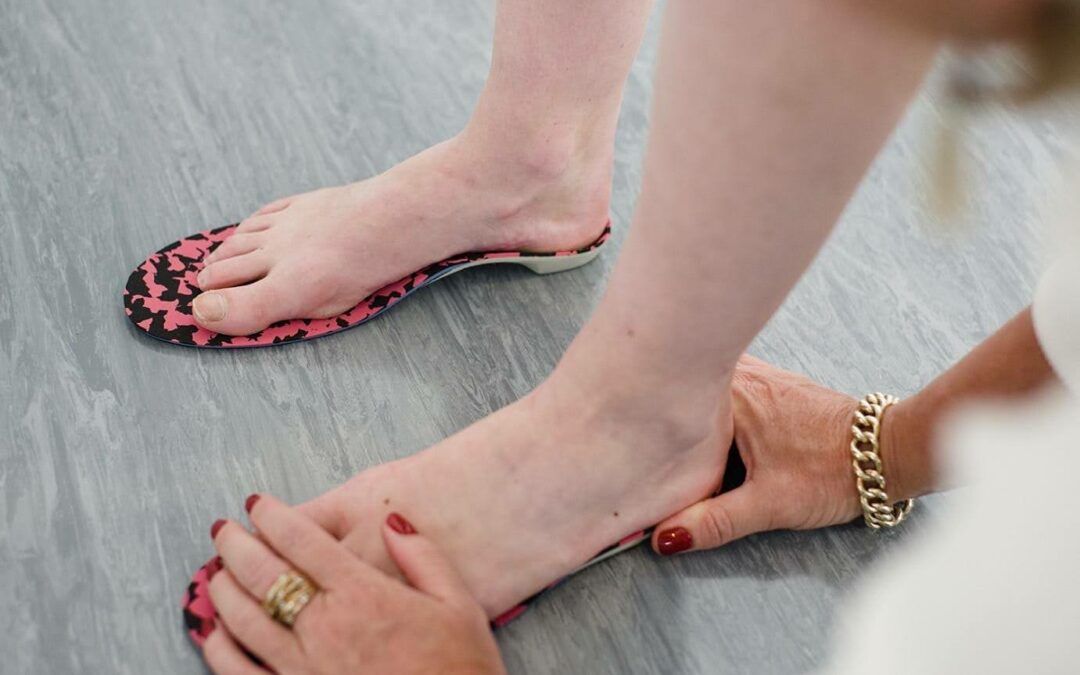Bunions, medically known as hallux valgus, are a common foot deformity characterised by the misalignment of the big toe joint. They can be painful and impact one’s mobility and quality of life. Orthotic treatment is a non-invasive approach to managing bunions, providing relief from discomfort, and helping to slow the progression of the condition. Although orthotics will not fix your bunions, they are a great alternative to surgery if this is not an option for you.
This comprehensive guide will explore the various aspects of orthotic treatment for bunions.
Understanding Bunions
Bunions are bony protrusions that form at the base of the big toe. They result from a misalignment of the metatarsophalangeal (MTP) joint, where the big toe meets the first metatarsal bone. This misalignment can cause the big toe to deviate towards the other toes, resulting in pain, swelling, redness, and sometimes even limited mobility. Various factors, including genetics, tight-fitting shoes, injury, and certain medical conditions can cause bunions.
Orthotic Devices for Bunions
Orthotic devices are specially designed to provide support, alleviate pain, correct foot posture and pressure and also, improve the alignment of the big toe.
Custom-Made Orthotics:
- Custom orthotics are prescribed and fabricated by a podiatrist. They are tailored to the specific needs of the individual and their bunion condition. These orthotics offer the most effective and precise treatment for bunions, when surgery isn’t indicated.
Benefits of Orthotic Treatment for Bunions
Orthotic treatment for bunions offers several benefits, including:
- Pain Relief: Orthotics can alleviate bunion pain by redistributing pressure and reducing friction on the bony prominence.
- Improved Alignment: Custom orthotics can gradually correct the misalignment of the big toe, helping to slow down or halt the progression of the bunion.
- Enhanced Comfort: Orthotic devices provide cushioning and support, making it easier to walk and perform daily activities without discomfort.
- Reduced Risk of Complications: Properly aligned orthotics can decrease the risk of developing secondary issues like hammertoes, calluses, or bursitis.
The Orthotic Treatment Process
The process of receiving orthotic treatment for bunions typically involves the following steps:
- Consultation with a Podiatrist:
- The first step is to consult with a podiatrist and they will evaluate the severity of your bunion and discuss your symptoms.
- Orthotic Assessment:
- The specialist will conduct a thorough examination, which may include gait analysis and X-rays, to determine the most suitable type of orthotic device.
- Customisation and Fitting:
- If custom orthotics are recommended, 3-D scans of your feet will be taken to ensure a precise fit. These scans are used to create orthotic devices tailored to your unique foot shape and condition.
- Regular Follow-ups:
- Patients typically require follow-up appointments to adjust the orthotics as needed. This ensures that the orthotics continue to provide effective support and alignment correction.
Tips for Using Orthotic Devices
To make the most of orthotic treatment for bunions, follow these essential tips:
- Wear Properly Fitted Shoes:
- Choose footwear with a wide toe box and strong mid sole support to accommodate the orthotics and reduce pressure on the bunion.
- Gradual Adaptation:
- It may take some time for your feet to adjust to orthotics. Start by wearing them for short periods and gradually increase the duration.
- Maintenance and Hygiene:
- Keep your orthotic devices clean and in good condition. Have regular check-ups and replace them as recommended by your podiatrist.
- Physical Therapy:
- In some cases, exercises and strength conditioning may be recommended by your podiatrist to complement orthotic treatment and improve foot strength and flexibility.
- Weight Management:
- Maintaining a healthy weight can reduce the pressure on your feet and slow the progression of bunions.
Monitoring Progress
Regular follow-up appointments with your podiatrist are crucial to monitor the progress of your orthotic treatment. Adjustments to the orthotic devices may be necessary as your condition improves or changes. These follow-ups also allow you to discuss any concerns or challenges you may be experiencing.
Conclusion
Orthotic treatment for bunions can be a highly effective, non-invasive approach to managing and improving the condition of bunions. By seeking professional guidance, using the appropriate orthotic devices, and following the recommended tips for care and maintenance, individuals with bunions can experience pain relief, improved mobility, and an enhanced quality of life. If you suspect you have bunions or are experiencing foot pain, consult a healthcare professional for a thorough evaluation and personalized treatment plan.

